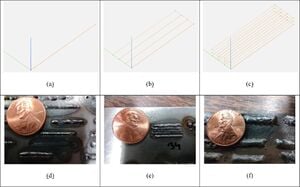
Proprietary metal 3D printing is still relegated to relatively expensive systems that have been constructed over years of expensive trial-and-error to obtain optimum 3D printing settings. Low-cost open-source metal 3D printers can potentially democratize metal additive manufacturing; however, significant resources are required to redevelop optimal printing parameters for each metal on new machines. In this study, the particle swam optimization (PSO) experimenter, a free and open-source software package, is utilized to obtain the optimal printing parameters for a tungsten inert gas-based metal open source 3D printer. The software is a graphical user interface implementation of the PSO method and is designed specifically for hardware-in-loop testing. It uses the input of experimental variables and their respective ranges, and then proposes iterations for experiments. A custom fitness function is defined to characterize the experimental results and provide feedback to the algorithm for low-cost metal additive manufacturing. Four separate trials are performed to determine the optimal parameters for 3D printing. First, an experiment is designed to deposit and optimize the parameters for a single line. Second, the parameters for a single-layer plane is optimized experimentally. Third, the optimal printing parameters for a cube is determined experimentally. Fourth, the line optimization experiment is revised and reconducted using different shield gas parameters. The results and limitations are presented and discussed in the context of expanding wire arc additive manufacturing to more systems and material classes for distributed digital manufacturing.
See Also[edit | edit source]
- Finding Ideal Parameters for Recycled Material Fused Particle Fabrication-Based 3D Printing Using an Open Source Software Implementation of Particle Swarm Optimization
- Open-source metal 3-D printer
- Applications of Open Source GMAW-Based Metal 3-D Printing
- Open Source Arc Analyzer: Multi-Sensor Monitoring of Wire Arc Additive Manufacturing
- Integrated Voltage—Current Monitoring and Control of Gas Metal Arc Weld Magnetic Ball-Jointed Open Source 3-D Printer
- Low-cost Open-Source Voltage and Current Monitor for Gas Metal Arc Weld 3-D Printing
- Slicer and process improvements for open-source GMAW-based metal 3-D printing
- MOST open-source metal 3-D printer v2
- Substrate Release Mechanisms for Gas Metal Arc Weld 3D Aluminum Metal Printing - how to get your print off the substrate with a hammer
- In Situ Formation of Substrate Release Mechanisms for Gas Metal Arc Weld Metal 3-D Printing
- Delft University of Technology - MIG+ Prusa I3
- Weld 3D - 1st commercial spin off
- see literature on "wire arc additive manufacturing" (WAAM)




